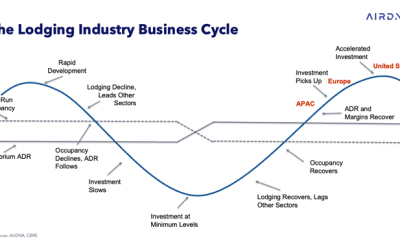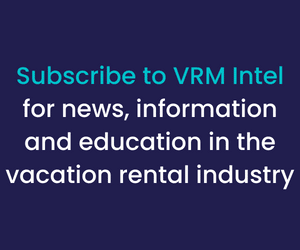
Depending on whom you ask, marketing and public relations (PR) are either two distinct functions that don’t have much to do with one another, or they go hand in hand. The traditional view separates them. Marketing is strictly focused on the promotion of goods with the goal of earning revenue. PR is focused on the controlled and strategic sharing of public-interest and news information with various stakeholders (most often staff, owners, and guests), building and maintaining a positive brand reputation, and earning media exposure. Marketing sells the product; PR sells the company.
But as technology has connected not only us much more deeply with each department’s previously distinct audiences but also those audiences with each other, the line between marketing and PR has blurred. This is especially true in the vacation rental industry where the company is the product when you are recruiting new owners to your program. As a marketing professional served every day by my degree in journalism and PR, I could not be more excited for this increased intermingling that generates results greater than the sum of its parts. And at least anecdotally speaking, I have found the more integrated marketing teams are with PR and vice versa, the more success they find in their respective areas.
The benefits of having your marketing and PR efforts working in tandem crystallize once we dig in to see how this plays out on a daily basis in property management. For example, consider the case of a recent partnership with a new vendor to offer your guests a new amenity. You must tell your owners about the benefits of having the amenity. If it’s their choice whether to offer it, this campaign will take a promotional approach (internal marketing); if it’s required or automatically offered to your entire inventory, this campaign will be more educational (internal PR). You’ll educate your reservationists and customer service agents about the feature (internal PR) so they can answer questions and talk it up to potential guests (marketing). Maybe you will distribute a press release or publish a blog post announcing the new feature to inform your stakeholders and drum up excitement for its release (PR and marketing). Then, of course, you will need to teach your guests what it is and sell it to them across your website, social media, email, OTA listings, and advertising to encourage them to book your homes (marketing). Through this entire process, potential owners may take note as they research and ultimately choose a future property manager (marketing).
Now, multiply that scenario by every new feature or program, every social media video, every newsletter, and every evacuation notice, and the need for marketing and PR’s teamwork becomes clearer (or blurrier?) Whether you decide to keep these functions separate or more mindfully integrate them, there’s a great deal to be learned and gained from how each can be used to amplify the other.
Social Media
One of the biggest areas of overlap is social media, where we build and maintain relationships with guests long before and after their stays. Here, we keep our properties and destinations at the front of guests’ minds, stirring up memories of their vacations and creating positive associations between them and our brand, distributing blog posts, announcing new products and flash sales, or sharing critical information about evacuations or other urgent situations, among many other activities.
Social media often falls under the purview of a marketing specialist or department, but in many ways it is closely tied to PR. We are creating a community—a captive audience—around our brand, and with the exception of private messages, the public can view interactions with fans and followers. Even when you are talking one-on-one with someone, such as a potential guest asking for fishing information, think of this interaction as a Q and A with a journalist that will be broadcast on TV.
Your social channels also provide a huge opportunity to project your company as the thought leader in your market, and some companies miss this opportunity for owner recruitment. Now, sharing owner-focused content in a guest community won’t do much good and could backfire, but there are other ways to leverage your social presence. You could create a Facebook group for owners in your area to serve as a forum, host live chats about industry news such as OTA policy changes, or join vacation property owner groups on LinkedIn and offer your insight in their discussions.
Review Responses
Responding well to positive and negative reviews is both a PR effort on the edge of customer service and a marketing opportunity. A tenet of both marketing and PR is to listen to your audience, and when we respond to reviews we say to the reviewer, “We hear you.” The content of our responses should be like the elements of a press conference: state the facts, correct any misinformation without placing blame, acknowledge and apologize for ways you may have let the guest down, state how you’re correcting the situation now to prevent it in the future, and then speak to what future guests can expect with your company. (Don’t stick around to field questions from the crowd—get that conversation offline as soon as possible afterward.)
Emergencies and Business Interruptions
Informing your stakeholders about critical situations, such as natural disasters or other emergencies that interrupt business and vacations, is a delicate balance. It’s a tightrope of expressing urgency, firm direction, concern for safety, and protection of property with a carefulness not to turn guests off to your destination entirely or offend those seriously affected by the situation, such as owners who lost their homes. Every property management company should be prepared for this scenario—consider creating a designated PR professional or team or taking a crisis communications course and running periodic drills to make sure you can distribute the right message in the heat of the moment.
As a silver lining to these situations that we hope we and our peers never have to face, the situations also offer hidden gems of marketing opportunities. Throughout your communications, you can address future guests about what to expect or not expect during their upcoming stays. You can also highlight how expertly your staff responds to these situations for both owners and guests, rally your troops and the local community in spearheading recovery efforts, and celebrate the reopening of your location with a special campaign or offer. Just remain mindful of the long-term stress and grief that your stakeholders and neighbors may be experiencing.
Owner Communications
In a single conversation with an owner, you can switch between being a marketer and PR specialist—not to mention customer service rep, crisis responder, therapist, salesperson, sounding board, best friend, and many other roles—all within a matter of sentences. To share policies and procedures effectively, help owners make the best decisions for their properties, introduce new programs for their buy-ins, and bear good and bad news, you should do so with PR delicacy through a marketing lens. Everything you say and do in those conversations or newsletters should be an extension of positive brand management, but as soon as that information or action spreads outside your company (which it will), it becomes a reflection of your products and services to others.
Employee Communications
The benefits of combining marketing and PR are two-fold. First, if you approach employee communications with the same thoughtfulness that you would a press release or marketing campaign, you will help ensure that your team receives the right information at the right time in the right way, no matter its content. Striking the right balance is particularly helpful with news that could be perceived negatively and take a toll on morale. Good PR and marketing-driven messaging that illuminate the reasons for and implications of an announcement soften the blow of bad news and generate excitement about good news. Consult your marketing and PR staff when you need to make internal announcements regarding sensitive subjects, whether they are positive or negative.
For example, let’s say the Townville City Council passes regulations to ban vacation rentals, so all property management companies in the area will lose their inventories there and be forced to lay off staff. Company A sends out an email memo stating, “Following the vacation rental ban in Townville, we will lay off thirteen staff members effective this Friday.” Company B sends a video message from its founder stating, “With the new regulations in Townville banning vacation rentals and our subsequent loss of 128 homes there, I am saddened to share that we can no longer support the employment of our thirteen colleagues in this area. This was an incredibly difficult decision we hoped we would never have to make. We did not want to lose these valued team members, and we are working with each of them personally to do everything we can to help them find new employment opportunities. I apologize that we lost our fight against this ban—we know we let you all down. Employees in other areas should not worry about further staffing changes, and we hope you will join us in our continued efforts to overturn these regulations and prevent similar bans from being passed in the other areas we serve.”
Which company would you rather work for? Furthermore, which company would you rather represent on the front lines? By communicating negative news to your employees compassionately, you can amplify your results because each staff member can become a more effective brand ambassador. Communicating well with your team demonstrates your respect for them and earns their respect for you, and this is a critical foundation in making your employees intrinsically want to be positive marketing and PR reps of your company, on and off the clock.
There are, of course, many other functions in which teaming up your marketing and PR practices can benefit your company. No matter where you are in your rental season, now is a good time to take a close look at how you can create your own marketing-PR symbiosis.













Great examples and points. Thank you! Love your choice in imagery, as well.